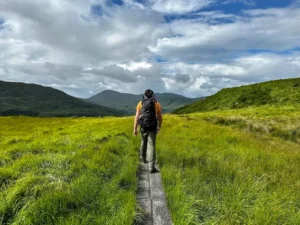1. Plan and Book in Advance
One of the best ways to save money on a solo trip is to plan ahead. While spontaneity is part of the fun, booking flights, accommodation, and even some activities in advance can often save you significant amounts of money. Use flight comparison tools like Skyscanner or Google Flights to monitor airfare prices and grab deals. Additionally, booking accommodation early ensures better rates and a wider selection of budget options, especially in popular tourist destinations.
If your dates are flexible, you can take advantage of the best deals by traveling during off-peak seasons when prices are lower, and destinations are less crowded.
2. Stay in Budget Accommodations
Accommodation is often one of the largest expenses on any trip, but there are plenty of budget-friendly options for solo travelers. Consider staying in hostels, guesthouses, or budget hotels. Hostels, in particular, are ideal for solo travelers because they offer opportunities to meet other travelers while keeping costs low. Many hostels also provide free breakfast, cooking facilities, and organized activities, which can help you save on food and entertainment.
Platforms like Airbnb and Couchsurfing offer affordable and unique places to stay. You can even stay with locals through Couchsurfing, which is completely free, allowing you to exchange travel experiences and local tips while cutting accommodation costs.
3. Embrace Public Transportation
When traveling solo on a budget, transportation costs can add up quickly. Instead of relying on taxis or rideshares, make use of public transportation such as buses, subways, and trains. Many cities offer day passes or multi-day transport cards that give unlimited access to public transport at a discounted rate.
In many destinations, biking is another budget-friendly and eco-conscious option for getting around. Consider renting a bike for a day or using bike-sharing programs, which are increasingly popular in cities around the world.
4. Eat Like a Local
Food is another major travel expense, but with a bit of planning, you can enjoy delicious meals without overspending. Skip the expensive tourist traps and instead eat where the locals do. Street food is often an affordable and authentic way to experience the local cuisine. In many places, markets offer fresh and budget-friendly meals at a fraction of the cost of dining in a restaurant.
If your accommodation has kitchen facilities, take advantage of local markets to cook your own meals. It’s a great way to save money and also get a feel for the local ingredients and cooking styles.
5. Take Advantage of Free Activities
Solo travel doesn’t mean you have to spend money on every activity. Many destinations offer free or low-cost experiences that will allow you to explore without breaking the bank. Walking tours, hiking trails, free museums, public parks, and city landmarks are just some examples of activities that don’t require spending a lot of money.
Research free events, such as local festivals, cultural performances, or art exhibits. Many cities also offer free walking tours where you can explore the area with a knowledgeable guide and only tip at the end, based on your satisfaction.
6. Be Flexible and Open to New Experiences
Sometimes the best solo travel experiences come from being flexible and open to unexpected opportunities. Don’t be afraid to explore off-the-beaten-path destinations that might be more affordable but equally rewarding. By venturing away from the most popular tourist spots, you can experience a more authentic side of the destination at a fraction of the price.
Additionally, staying flexible with your itinerary allows you to take advantage of last-minute deals, from discounted accommodation to special offers on activities.




